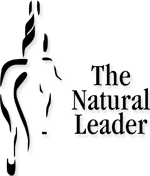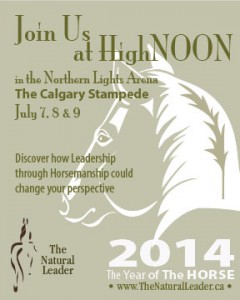Therapy is not something that I do with The Natural Leader programs, so when I encounter someone who has been traumatized with horses I do not have the degree to back me up. I can only go with what I see. Leadership is about demonstrated behaviour and a conversation I am quite comfortable with, so behaviour is where my focus lies.
Fear can be a great motivator, a tool for learning or it can paralyze us. What I hope for those who are fearful is that they can recognize how fear, or the story, that is holding them back from achieving more in their career or life.
Too afraid to even enter the arena, a participant of a recent program had been watching her peers go through a series of activities with the horses. Before heading up for lunch, I asked if she would be willing to connect with a horse together. I was searching for the invitation she would be comfortable with. Even with that offer, she was hesitant, in fact she flat out refused.
She had shared her story of trauma by horses with the Wranglers and was keen to let me in on the details. I expect she had also told everyone else on her team. Repeating the story not only re-traumatized her, but words of acknowledgement from others appeared to reconfirm her fear.
You can’t tell someone “Don’t be afraid”, so I was looking for the question that would help her step out of her comfort zone. What she had seen – the demonstrated behaviours or facts, rather than what she had believed to be true – the story. When she admitted she had seen nothing that confirmed her fear, she offered that coming into the arena with “one” horse might be okay.
In The Natural Leader programs “Everything is an invitation. An Invitation can be accepted, modified or declined.” I was thrilled she was willing to take that step. I had picked Big Jim. Though large in stature Big Jim is the image of calm and quiet. Still concerned, the introduction was short but she acknowledged she could be beside a horse. She left the arena one big step closer to change.
That afternoon, she volunteered to be the observer. Perhaps it was sharing those observations with her team that helped her believe she was ready to participate. Her smile and the change in her body language that followed suggested the relief that came with the belief she could do this, as her confidence grew so too did her participation.
She needed others to see and believe what she had believed impossible. Leaders are given that responsibility all the time, opening the door to allow someone to step through and experience the change they are seeking.






